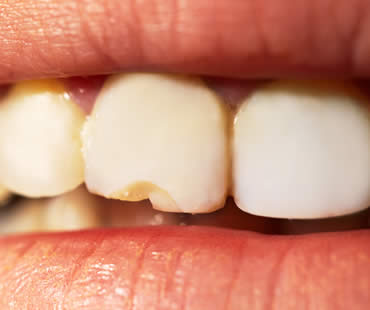
Oct 5, 2018 | Dental Topics 2, Implant Dentistry, Blog
In the past, replacing lost teeth meant getting dentures or bridges. Even though these offered the best way at the time to restore your mouth’s appearance and function, technology has improved through the development of dental implants. The main drawbacks of bridges and dentures is that they do not feel or look just like real teeth, and it is difficult to chew tough foods. The advantage of implants is that they look and perform so well that you can’t even tell they are not your natural teeth.
Made from titanium, dental implants are screws that are surgically placed directly into your jawbone. They are light and malleable, but durable and strong. The titanium screws are implanted into your jawbone and given time to heal. Once healing is complete, one or multiple crowns are placed on top of the implant to recreate your missing teeth. One implant can hold more than one screw, so it is possible to attach as many crowns as needed to replace your missing teeth.
Dental implants look so much like real teeth that others won’t even be able to tell that you have any artificial teeth. You might even forget about it yourself, as they feel real as well. Since the implants are securely placed in your jaw, they are as strong as real teeth and you are able to chew and bite anything that you would normally eat. Another great thing about implants is that they don’t impact any of your adjacent healthy teeth. While bridges and dentures can sometimes damage neighboring teeth because those teeth are necessary for support, implants avoid this problem. You are left with a fully restored and comfortable smile.
Our dental office is located in Conyers

May 8, 2020 | Dental Topics 2, Implant Dentistry, Blog
Having a hole in your smile is not only embarrassing or unsightly, it also impacts the function of your mouth. It’s much easier to eat and speak with a full set of teeth. In the past, dentures or bridges were the go-to solutions for missing teeth. Not anymore! Dental implants provide a secure and permanent way to restore your smile.
A dental implant is a titanium rod that creates an artificial tooth root in the location that yours is missing. It is surgically implanted into your jaw so that as it heals, it fuses with your jawbone and becomes a permanent part of your body. Once the area has healed, an artificial tooth is placed on top of the titanium rod to give you back a fully functional and attractive tooth.
Dental implants offer many advantages to patients:
- Permanent
- No impact to neighboring teeth
- Attractive and natural
- Feels like a real tooth
- Secure
- Prevents migration of teeth
Implants are installed using local anesthesia, so you will not experience pain during the procedure. Minor swelling may occur afterwards, and any pain can usually be treated with over-the-counter products. Risks are low with dental implants, and long-term results are successful in most cases. Good oral care is important in maintaining your implants, but is no different than your regular brushing and flossing routine. Regular checkups with your dentist will help ensure that your implant remains in your smile forever.
We look forward to seeing you in our Conyers dental office

Jan 11, 2019 | Dental Topics 2, Implant Dentistry, Blog
Dental implants provide an innovative solution for replacing missing teeth. A titanium rod is surgically placed in the jaw so that it can fuse with the bone, and ultimately an artificial tooth is placed on top to complete the process. This type of surgery is an intricate process that should be performed by a qualified and experienced dentist or oral surgeon. Even patients under the care of the most skilled professionals sometimes encounter problems with dental implants. Here are some risks to watch out for with this procedure.
Infection:
The most common concern with nearly any type of surgery is the possibility of infection. Oral surgery is no different, with the risk of infection related to tissue and gums. Carefully following the dentist’s instructions for aftercare and any restrictions is vital in avoiding infection.
Nerve and tissue damage:
During dental implant surgery, various nerves and tissue are involved. A qualified healthcare professional should have years of experience in carefully performing the surgery so that tissue and nerves are not damaged in the process.
Improper fusing:
One key element of a successful dental implant is for it to fuse properly with the jaw bone. If that does not occur, pain or other issues may result. The dental implant must be attached carefully and the patient must follow the recovery guidelines in order to help guarantee a successful outcome.
Dental implants are becoming more and more common to restore the function and appearance of a healthy mouth. The best way to steer clear of the risks associated with this procedure is to seek treatment from a reputable and well-established professional. Between having a high-quality procedure and making smart choices throughout recovery, the likelihood of a successful dental implant increases.
We look forward to seeing you in our Conyers dental office

Aug 21, 2020 | Dental Topics 2, General Dentistry, Blog
Restorative dentistry has made incredible advancements in the technology of restorative dental materials, and there are more options than ever today for your dental crown or dental bridge. Zirconium and porcelain have proven to provide lasting strength and durability, exhibiting the most natural cosmetic dental restorations available today. Each tooth in each mouth is different, however, and in some cases, resin composite or metal alloy might be the choice recommended for you.
Metals are a common choice for dental crowns and dental bridges. Gold or palladium alloys, as well as chromium or nickel (base-metal) alloys can be excellent choices. Metal alloy crowns show the least “wear down” over years of use. They almost never chip, break or wear down opposing teeth. The primary complaint about metal alloy materials is that their color is metallic and thereby unnatural. They will not blend with the surrounding teeth, and as such, they are chosen more for back molars where they won’t draw attention.
Dental composite/resin materials are a popular choice that can be made to blend with the surrounding teeth, but they’ve been shown to wear down over time and are more prone to fractures and breaking than other materials.
Porcelain can be fused to metal to form a natural-appearing crown or bridge, and because of their appearance, are a good choice for front or back teeth. Over time, however, discoloration can appear along the gum line as the porcelain wears away, leaving a dark, unsightly line. The porcelain can be fused to zirconium, however, which eliminates the dark line and is a good cosmetic choice for front teeth.
Crowns and bridges can also be made from all-porcelain or all-ceramic materials. These materials are the best choice for natural-looking teeth of the types of dental crown and dental bridge materials available in restorative dentistry today. Because they contain no metal, they are excellent choices for patients with metal allergies. They tend to be weaker and less durable than materials containing metals, however.
Talk to your cosmetic dentist today with any questions you have regarding what type of dental crown or bridge material is best for your smile needs.
If you need a dentist in Conyers contact us today

May 6, 2022 | Dental Topics 2, General Dentistry, Blog
If you have severely damaged, diseased or injured teeth, your dentist may recommend crown and bridge treatment. A crown is a dental restoration that fully covers a tooth and becomes the tooth’s new outer surface. A bridge is also a dental restoration that is anchored to natural teeth. However, a bridge replaces and fills the gap left by multiple missing teeth. Both crowns and bridges are made from a variety of materials and can be matched to the color of your natural teeth. Unlike removable dental devices like dentures, crowns and bridges are permanently affixed to existing teeth or implants allowing them to look and function similarly to natural teeth.
In addition to restored function and appearance, crowns and bridges offer a host of additional benefits including:
- Dental crowns protect and strengthen the natural tooth, helping you to avoid extraction.
- Crowns are the final step in root canal treatment, protecting the tooth from bacteria that could re-infect the treated tooth.
- Crowns and bridges restore missing teeth and support the remaining teeth.
- Your natural bite is restored and maintained with crown and bridge treatment.
- Placement of crowns and bridges improve your speech, smile and chewing function.
- Adjacent teeth are prevented from shifting and tilting with crown and bridge treatment.
- Crowns and bridges are long-lasting, predictable and durable.
- Placement of crowns and bridges is quick and can usually be completed in as little as two appointments.
- Alternatives to crown and bridgework, like dental implants, are usually more invasive requiring surgery and possibly bone grafting to place the implant.
Consult with your dentist to find out more about the advantages of crowns and bridges and how they can help to restore your healthy smile.
If you need a dentist in Conyers contact us today

Apr 25, 2024 | Dental Topics 2, General Dentistry, Blog
When you have a tooth or multiple teeth with extensive damage, your dentist may recommend a crown or bridge to restore your smile. Most of the time these restorations provide complete and successful results, but occasionally problems arise.
Tooth decay:
Good hygiene is imperative after a crown or bridge because plaque can build up in the area where the tooth and crown meet. Your crown can’t decay, but your tooth still can. Follow your dentist’s instructions for proper brushing, flossing, and fluoride use.
Gum disease:
Plaque buildup around a crown can cause gum disease called gingivitis, and if untreated advance to periodontitis.
Chipping or breaking:
Crowns and bridges are susceptible to damage like fracturing or chipping. Many crowns are made of porcelain, which can chip or completely fail. Heavy wear or stress such as teeth grinding can cause this type of damage, as well as an accident like hitting your restoration. Small chips may be repaired with composite filling, but larger damage can mean total replacement.
Incorrect color:
When having your crown or bridge made, you can choose from a selection of colors. However, the whitest shade is not advised because it likely won’t match the rest of your smile or it can look fake. Make sure you consider the color carefully or else you’ll be faced with redoing the restoration if you dislike it.
Falling out:
Several problems can cause your crown to fall out. The core may fail so that the interior portion of your crown is unable to provide a strong base for the restoration. Less likely, the cement can fail so that the crown simply needs stronger adhesion. Or, the post crown can dislodge so that you’ll see a large post sticking out of your crown. If your crown falls out, be sure to save it for your dentist in case it can be reinserted.
In most circumstances, these problems with your crown or bridge do not occur and you can enjoy a long lifespan with your restoration. If you do notice any of these issues, schedule an appointment with your dentist to ensure optimum oral health.
We look forward to seeing you in our Conyers dental office








